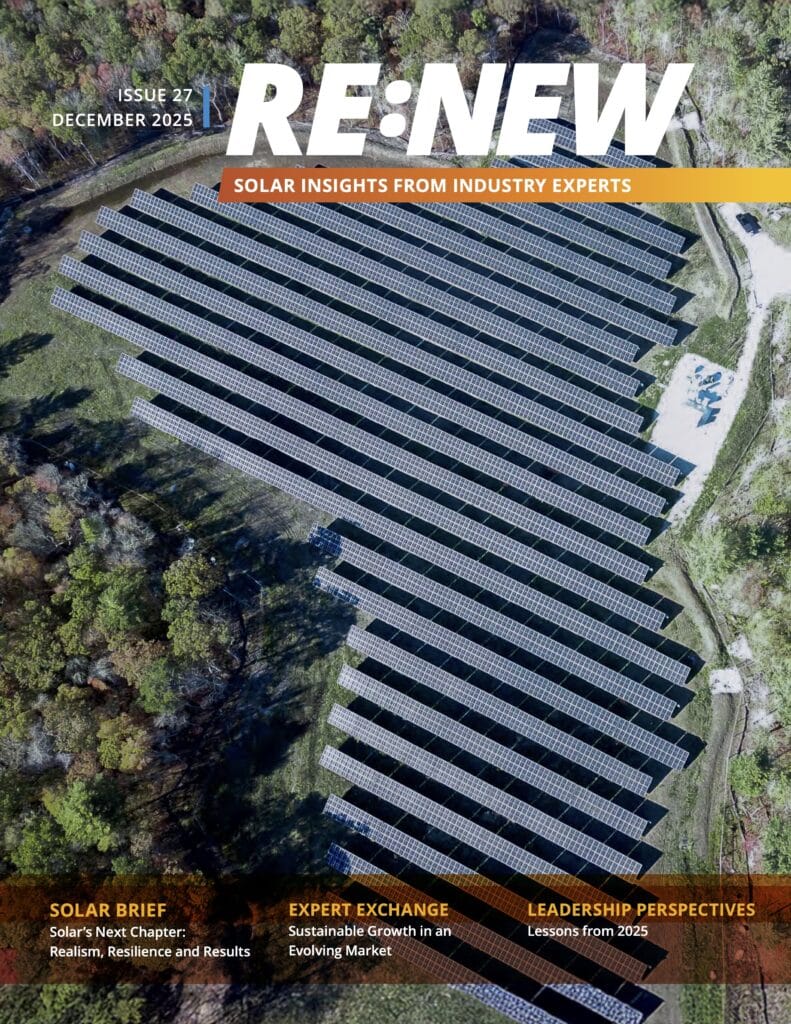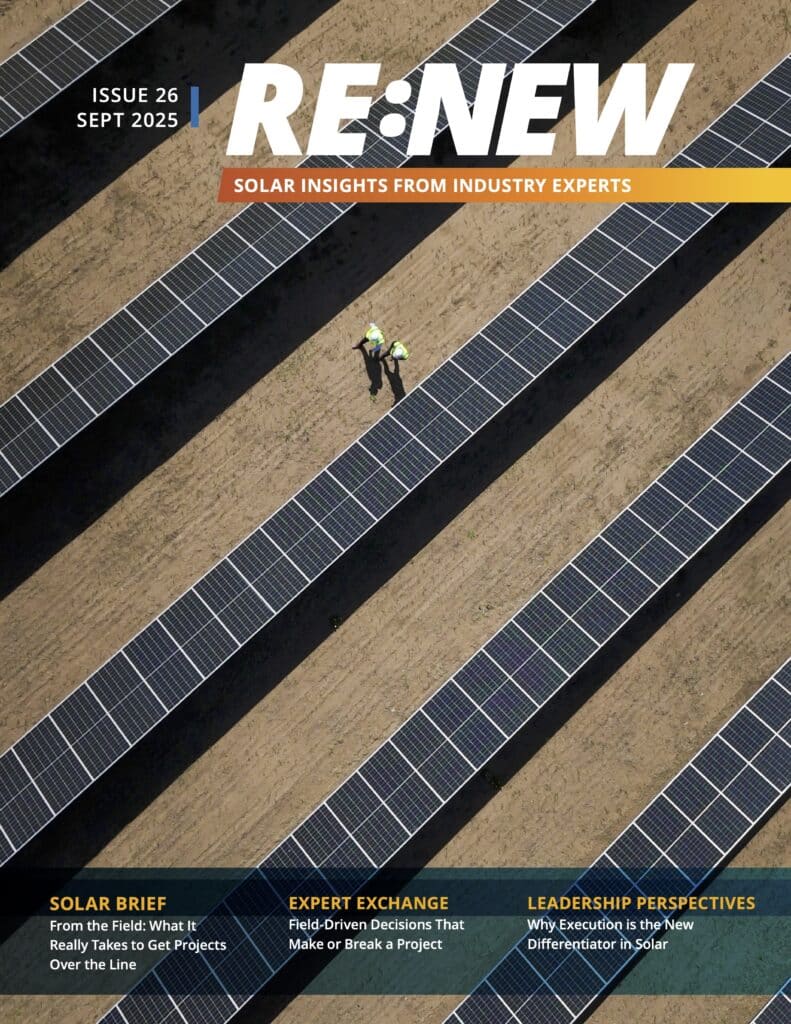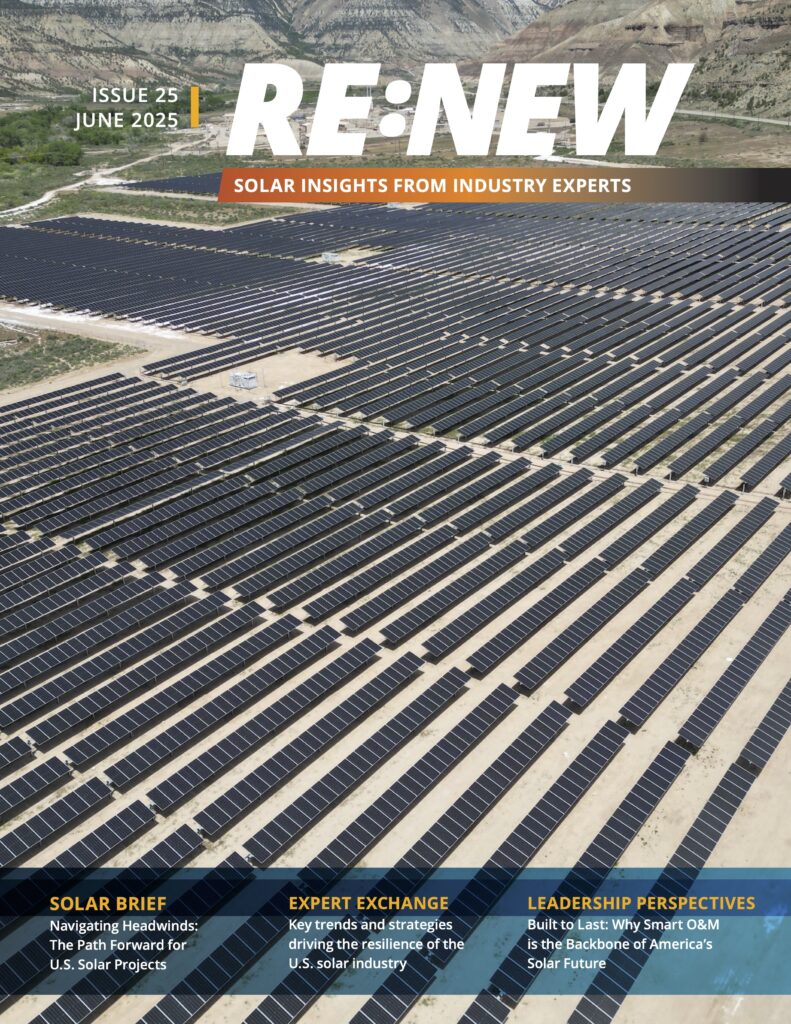Tariffs. Misinformation. Panic selling. All of these factors can have negative effects on the module supply chain—but navigating these challenges can be the difference between a project’s success and failure.
For more than a year, the tariffs being levied on solar modules has been the center of most discussions of supply chain management—and with good reason.
After spiraling downward for about five years, prices were expected to be more expensive as a result of the duties imposed by the Trump Administration. The entire industry braced for module prices to go up and started signing projects based on the elevated prices.
Then the Chinese decided to slash their domestic industry severely, leading to the giddy prediction that most of the oversupply that was sure to follow would come to the United States. So people started pricing projects based on the lower projections.
Now there’s another round of tariffs being imposed on modules, and no one seems to know what the effect of them will be. So how on Earth can you manage
your supply chain in a world that seems to have gone completely mad?
Keep a level head, do your due diligence and make your best estimate. Otherwise, at the end of the day, you’ll just drive yourself crazy.
DON’T GET DISTRACTED
There’s a lot of churn in the solar module market right now, and it’s easy to see why. Federal solar policy virtually incomprehensible, and even the Tier 1 manufacturers are having to deal with shifts that seem to be coming faster every day. It’s enough to make anyone throw up their hands in despair.
But don’t do that.
When all is said and done, only those people who watch the long-term trends will be the ones to succeed. Getting caught up in the latest news item—Module prices are down! Module prices are up! Module prices are fluctuating!—won’t do you or your stress levels any good.
INVEST IN A TEAM
The best investment you can make is in a team that can monitor module prices for you. Having a group of people involved improves the chances you will get it right because no one person will have to keep track of all the craziness themselves.
As module prices fluctuate, even the manufacturers themselves aren’t sure what’s going to happen. Sometimes, you’ll be working with a company that will insist they’re sold out for the next 18 months and then three months later they’re back at your door, asking you to take some of their inventory off their hands.
Then there are the companies that are having a fire sale on their panels because they are simply trying to raise money to stay afloat. Be wary of anyone who tells you they can deliver you a ton of modules immediately because they may not be the highest quality modules available.
It’s all about patience. If your team has the nerve and willingness to wait, they will be able to find the highest quality modules for you at the right price.
PREDICT CONSERVATIVELY
What we can say confidently is this: Don’t listen to the analysts. Like any other human being, they can get caught looking at current trends and assuming the current trends will continue forever—but as anyone who has been in the solar industry for any length of time will tell you, the solar industry is like Midwestern weather. Whatever is going on right now is not what will be going on three weeks from now or a week from now or, heck, an hour from now.
If you are making your bids based on the idea that prices of modules are going to keep going down, you are going to underprice your bid and end up with a project that doesn’t pencil out in the end. If you keep your wits about you and your team has paid attention to the long-term trends, you can make more conservative assumptions and get the deal done at the right price for everyone.
LARGER LESSONS
While the module market is the most volatile supply chain in the solar market today, it is not the only aspect of the supply chain to which you should be paying attention. Tariffs are coming on inverters, and steel and aluminum tariffs are bound to bite in the racking business, too.
That’s why your team needs to be keeping their eyes on all the balls to prevent one of them from falling and keeping you from winning a project. Supply chain management is not easy, but it’s not impossible either.
It centers on staying focused, having the right team in place, not falling for the latest “sale of the moment” tactics and making sure your deal covenants are conservative enough to be executable once the deal is signed on the dotted line.
If you do that, you will not only have the winning bids, but profitable projects for years to come.
More Recent Blog Posts
Delivering on Our Promise: 2025 in Review
December 11, 2025
Scott Wiater · 3 min read
How Student Health Unlocks School Energy Projects
December 3, 2025
Standard Solar · 4 min read
The Remarkable Growth of Community Solar in the District of Columbia
October 22, 2025
Standard Solar · 2 min read
Navigating a Solar Market in Transition: Takeaways from RE+ 2025
September 26, 2025
Megan Byrn · 3 min read
Most Popular Blog Posts
Illinois’s energy industry is poised to become much greener and cleaner
Harry Benson · 3 min read
Closing The Book On 2020—And Eagerly Anticipating 2021
Scott Wiater · 3 min read
2022: A Year of Opportunity and Challenge for Solar
Scott Wiater · 3 min read
Diversity Makes Our Industry Stronger
Travis Tate · 3 min read






Share